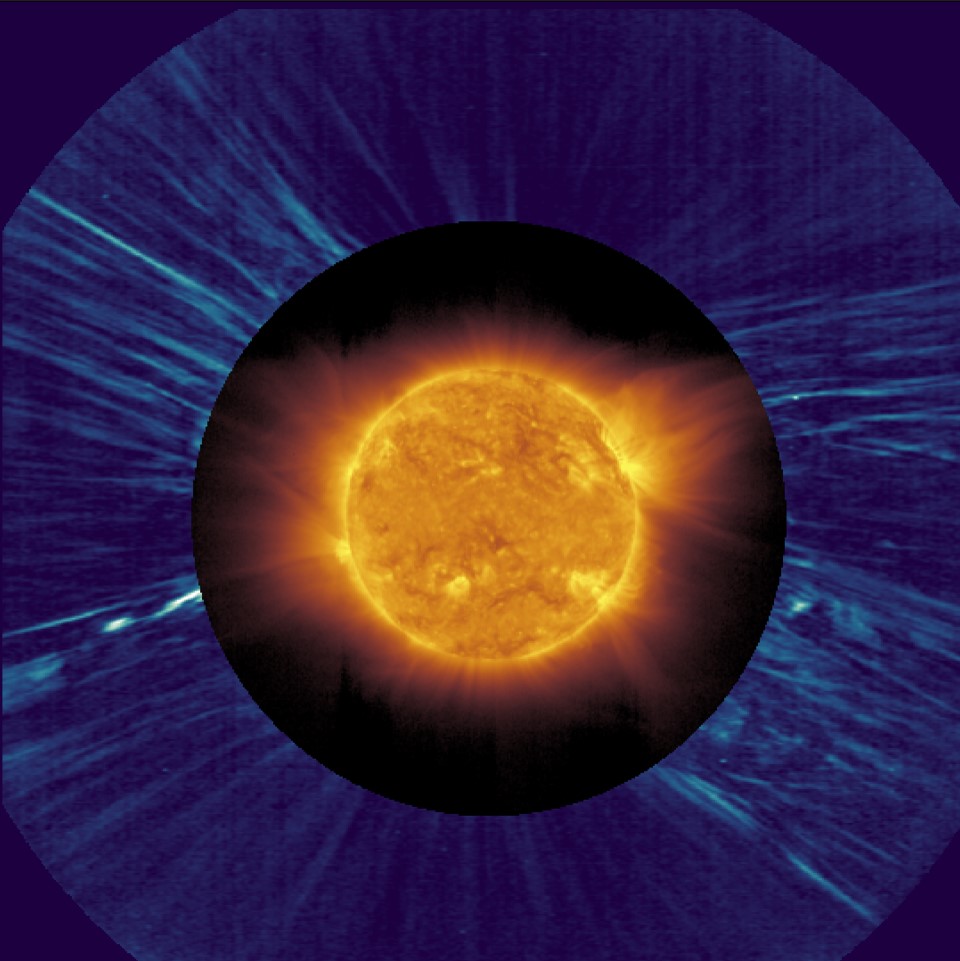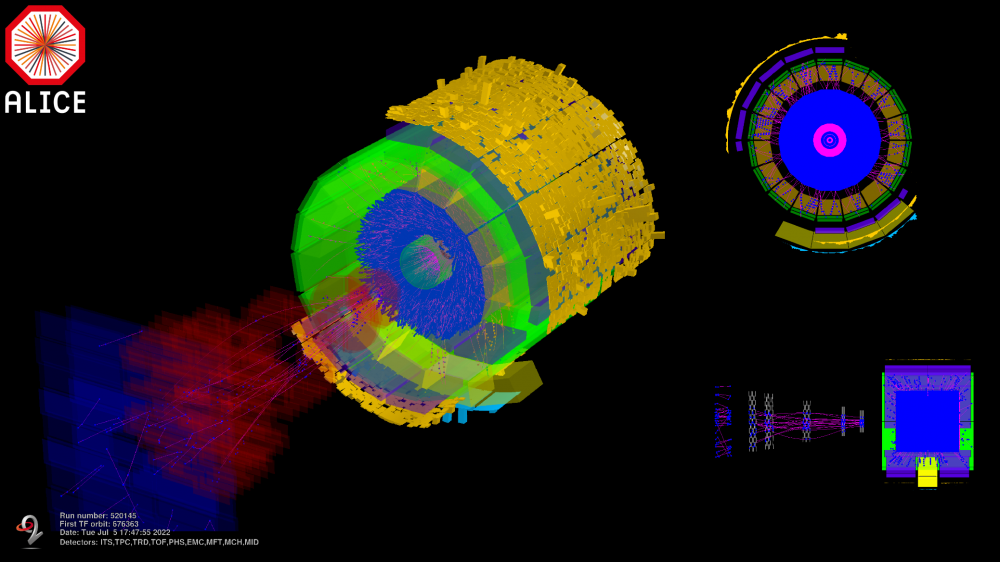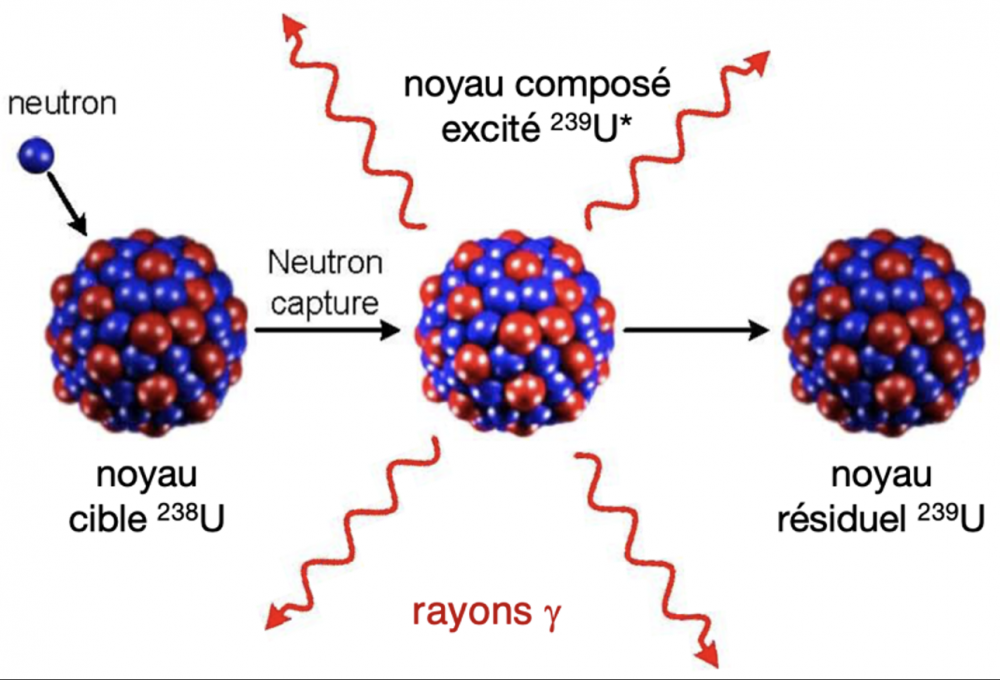As part of the Solar Orbiter science support activities and in conjunction with the ERC Synergy WholeSun grant, researchers from CEA Paris-Saclay, together with an international collaboration, have developed advanced numerical simulations to study the formation of structures of the solar wind. These simulations allow studying the interaction of the convection at the solar surface with the magnetic field. They reveal the appearance of twisted magnetic structures that can participate in the creation of switchbacks.
The Solar Orbiter mission, launched on February 10, 2020 from Cape Canaveral has already traveled more than 2 billion km. Since its passage just 470 km above the Earth in November 2021, the science mission has officially begun. On March 26, 2022, Solar Orbiter passed within 0.32 astronomical units of our star (about 1/3 the distance from Earth to the Sun) for its fourth perihelion (the point in its orbit where Solar Orbiter is closest to the Sun) at a speed of 198,000 km/h. On this occasion, all 10 instruments onboard will be jointly switched on and pointing towards our star. As the cycle 25 of magnetic activity of the Sun is in full rise of intensity, it is highly probable that many eruptive events will be observed with the STIX telescope (Spectrometer Telescope for Imaging X-rays) whose detectors, the Caliste-SO, were conceived, realized and qualified at CEA.
On the occasion of this 4th perihelion, this milestone delivers one of the first X-ray images from STIX as well as new simulations of the Solar model from a DAp team, which have given rise to recent articles (see end of page)
As part of the Solar Orbiter science support activities and in conjunction with the ERC Synergy WholeSun grant, researchers from CEA Paris-Saclay, together with an international collaboration, have developed advanced numerical simulations to study the formation of structures of the solar wind. These simulations allow studying the interaction of the convection at the solar surface with the magnetic field. They reveal the appearance of twisted magnetic structures that can participate in the creation of switchbacks.
After three years of interruption during LS2 (Long Shutdown 2), ALICE was on time for the first collisions after a very important rejuvenation started in 2012 of its electronics, readout and acquisition systems as well as the addition of new detectors. IRFU has long been heavily involved in the ALICE muon forward spectrometer, in particular the MCH (Muon Chambers) tracking chambers, and now also in the new MFT (Muon Forward Tracker) silicon pixel tracker. The MFT will allow to extend the physics domain to additional channels by bringing a better resolution on the tracks and thus on the mass of the detected particles as well as on the extrapolation of the muon tracks to the interaction point.
The DPhN, in collaboration with the Department of Reactor Studies of Cadarache (DES) and the Institute of Particle and Nuclear Physics of Charles University in Prague (Czech Republic), studied the properties of gamma rays emitted by uranium isotopes during neutron capture reactions. Gamma-ray spectra measured at CERN's n_TOF facility were used as a test bed for nuclear reaction models and their ingredients, including the photon strength function that characterises the ability of a nucleus to emit or absorb photons. This work has enabled consistent modelling of the photon strength functions of the uranium isotopic chain (234U, 236U, 238U) and confirmed the presence of a particular oscillation mode of the nucleus shape at low excitation energy. This study was carried out as part of the PhD thesis of Javier Moreno-Soto [1] and the full results are published in Physical Review C [2].





